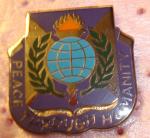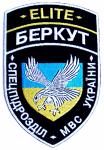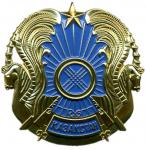Pattern 83 Battle jacket
ランダム

413th CA bn

шеврон Подразделения милиции специального назначения «Беркут» МВД Украины

Cap Badge of Generals, Officers, Warrant officers and Contract Soldiers of the Armed Forces of Kazakhstan
情報を変える
Adopted in 1983 by the SADF (South African Defence Forces), the p.83 came as a response to the analysis of tactical needs in the operations in desert environments, by and for south african concepts. Designed around the R4 (galil variant) rifle, this platform has sown in pockets and is optimised to store the maximum possible ammount of equipment. Slots include:
-4 double magazine pouches for a total of 8 (35 round) magazines.
-2 smoke/marker grenade pouches
-2 small utility pouches for frag grenades or compass
-1 large utility pouch for a medkit (underneath it, a slot for documents)
-2 large lateral pouches for 2 liter water bottles or ammunition belts (for LMG gunners)
-1 Large "backpack" compartment divided in 2 sections: the top one is for radio operators to house their radio station (or otherwise general storage), the bottom one is to store the mess kit and utensils. On the sides there are loops to attach bedrolls and rain gear.
The jacket is built on a sturdy mesh base, highly adjustable (one size fits all) and secured by 2 fastex clips. Pouches are sewn directly onto the mesh and are made of waterproofed (rubberised), lightweight cordura fabric in nutria colour. The choise of materials is in direct response to the previous loading system used by the SADF, the pat.70 webbing, which had canvas fabric that was heavy and would soak easily. All pouches are closed by velcro and many of the pouches adjust to accomodate for different ammunition dimensions. The Battle jacket was designed based on the fireforce vests used by the Rhodesian Security Forces during the Bush War (1964-1979). It was designed for short operations (48 hours max.) by highly mobile, mechanised infantry, as evidenced by the emphasis on ammunition carriage over sustainment equipment. For longer operations without extensive vehicle support, the companion P.83 Chestrig and Bergen were meant to be used.
The P.83 battle jacket design was highly influential, being used by many british commomwealth contemporaries as a special forces piece of gear, and being both directly copied and used as an inspiration for many pieces of military equipment in decades to follow.
It's still used by the SANDF (South African National Defence Forces, the name since 1994) alongside other newer designs that have not managed to replace it yet
-4 double magazine pouches for a total of 8 (35 round) magazines.
-2 smoke/marker grenade pouches
-2 small utility pouches for frag grenades or compass
-1 large utility pouch for a medkit (underneath it, a slot for documents)
-2 large lateral pouches for 2 liter water bottles or ammunition belts (for LMG gunners)
-1 Large "backpack" compartment divided in 2 sections: the top one is for radio operators to house their radio station (or otherwise general storage), the bottom one is to store the mess kit and utensils. On the sides there are loops to attach bedrolls and rain gear.
The jacket is built on a sturdy mesh base, highly adjustable (one size fits all) and secured by 2 fastex clips. Pouches are sewn directly onto the mesh and are made of waterproofed (rubberised), lightweight cordura fabric in nutria colour. The choise of materials is in direct response to the previous loading system used by the SADF, the pat.70 webbing, which had canvas fabric that was heavy and would soak easily. All pouches are closed by velcro and many of the pouches adjust to accomodate for different ammunition dimensions. The Battle jacket was designed based on the fireforce vests used by the Rhodesian Security Forces during the Bush War (1964-1979). It was designed for short operations (48 hours max.) by highly mobile, mechanised infantry, as evidenced by the emphasis on ammunition carriage over sustainment equipment. For longer operations without extensive vehicle support, the companion P.83 Chestrig and Bergen were meant to be used.
The P.83 battle jacket design was highly influential, being used by many british commomwealth contemporaries as a special forces piece of gear, and being both directly copied and used as an inspiration for many pieces of military equipment in decades to follow.
It's still used by the SANDF (South African National Defence Forces, the name since 1994) alongside other newer designs that have not managed to replace it yet



